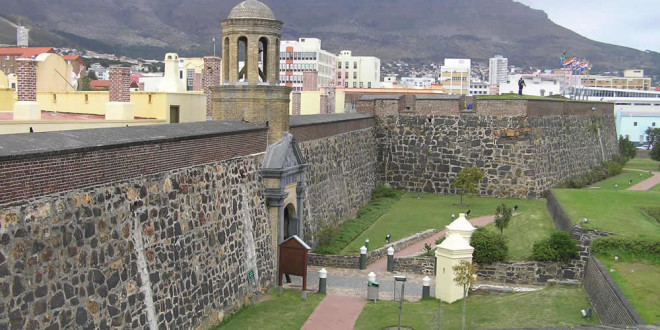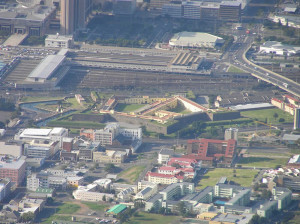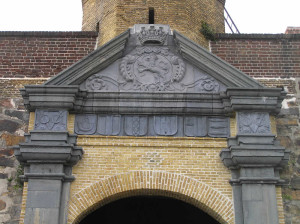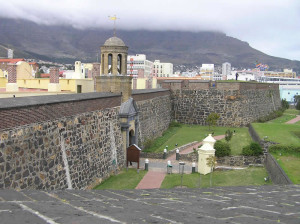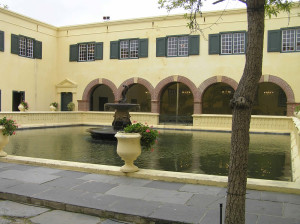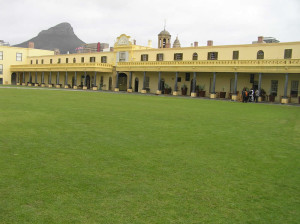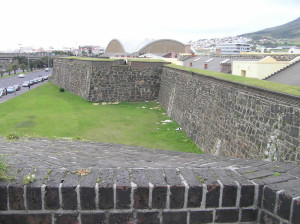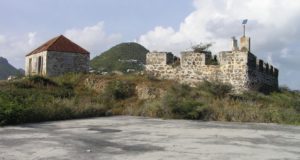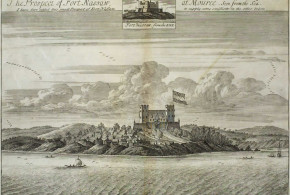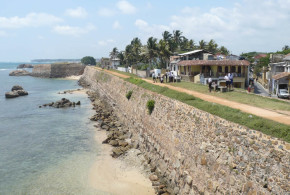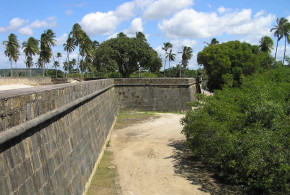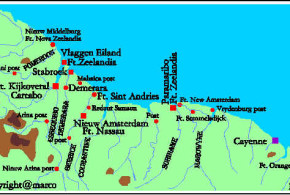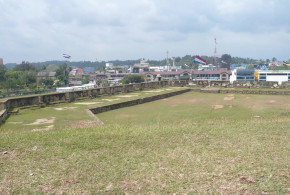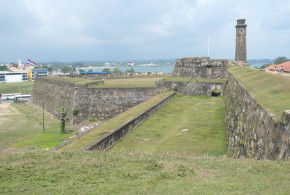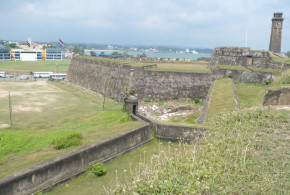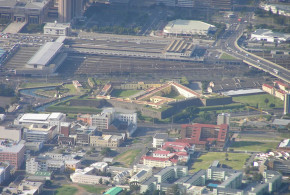This post is also available in:
![]() Italiano
Italiano
Written by Marco Ramerini. English text revision by Dietrich Köster.
The Castle of Good Hope (Kasteel de Goede Hoop) is the oldest building in South Africa, it was built by the Dutch East India Company (VOC, Vereenigde Oost-Indische Compagnie) between 1666 and 1679; it was built in stone in substitution of a first wooden fort which was built in 1652 by Jan van Riebeeck, who commanded the Dutch expedition who founded Cape Town. The Riebeeck fleet consisted of five ships equipped by the Dutch East India Company (VOC) to establish a permanent settlement near the Cape of Good Hope, placed strategically along the route to the islands of Spices, so that they can supply ships along the crossing that led from Europe in the East.
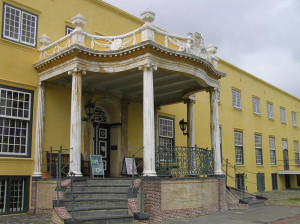
Katbalkon, Castle of Good Hope (Kasteel de Goede Hoop), Cape Town, South Africa. Author and Copyright Marco
The Castle of Good Hope, an imposing stone building, was built along the ancient coastline, the works began in 1666, the first stone was laid on January 2, 1666, under the command of Zacharius Wagenaer and lasted until 1679. The castle has a pentagonal plan a five-pointed star, with moat and bastions at each corner, the five bastions were called Leerdam, Buuren, Katzenellenbogen, Nassau and Oranje, the original entrance was on the sea side, but in 1682 was decided to close the old entry and the current gate was open, above which was built, in 1684, the tower, which houses a bell of 1697.
Inside the castle were built a church, a bakery, some laboratories, shops, quarters for the soldiers of the garrison, the residence of the governor and prisons, the castle is divided into two main courtyards. In 1695, the Katbalkon was built, in the center of the old residence of the governor, which was renovated, designed by Louis Michel Thibault, between 1786 and 1790, it is a kind of podium balcony, where the governor used to make announcements to soldiers or citizenship.
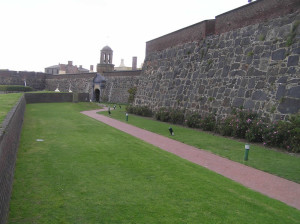
Leerdam bastion and the entrance gate to the Castle of Good Hope (Kasteel de Goede Hoop), Cape Town, South Africa. Author and Copyright Marco
Today, the castle houses inside many attractions: the William Fehr Collection, in the palace of the governor, exposes antique furniture and paintings of the Dutch period. The Military Museum (Castle Military Museum) shows the military history of the castle and the history of the Cape colony. Inside the castle are also a restaurant and a bar. Every day at 10 am and 12 am, the castle guard performs the ceremony of the keys, which represents the opening of the castle, at the end of the ceremony is fired a gunshot.
Opening time: Open daily from 9.00 am to 16.00 pm. Closed December 25 and January 1. Tickets: Adults R20.00; Seniors R15.00; Students R10.00; Children R10.00; Half price on Sundays.
- Leerdam bastion and the entrance gate to the Castle of Good Hope (Kasteel de Goede Hoop), Cape Town, South Africa. Author and Copyright Marco Ramerini
- Katbalkon, Castle of Good Hope (Kasteel de Goede Hoop), Cape Town, South Africa. Author and Copyright Marco Ramerini
- Castle of Good Hope (Kasteel de Goede Hoop), Cape Town, South Africa. Author and Copyright Marco Ramerini
- The Dutch East India Company (VOC) symbol it’s still at the entrance gate of the Castle of Good Hope (Kasteel de Goede Hoop), Cape Town, South Africa. Author and Copyright Marco Ramerini
- Castle of Good Hope (Kasteel de Goede Hoop), Cape Town, South Africa. Author and Copyright Marco Ramerini
- The Inner Courtyard and the Dolphin fountain, Castle of Good Hope (Kasteel de Goede Hoop), Cape Town, South Africa. Author and Copyright Marco Ramerini
- Castle of Good Hope (Kasteel de Goede Hoop), Cape Town, South Africa. Author and Copyright Marco Ramerini
- Castle of Good Hope (Kasteel de Goede Hoop), Cape Town, South Africa. Author and Copyright Marco Ramerini
BIBLIOGRAPHY:
– Guelke, Leonard “Freehold farmers and frontier settlers, 1675-1780” In: “An Expanding World” Vol. n° 4; Disney, A. “Historiorgraphy of Europeans in Africa and Asia 1450-1800” Ashgate Variorum, vol. n° 4, 1995; pp. 174-216 Also in: “The shaping of South African Society 1652-1840” 1986, Middelton, Connecticut, USA, pp. 66-108
– Guelke, Leonard “The anatomy of a colonial settler population: Cape Colony, 1657-1750” In: “An Expanding World” Vol. n° 29; Nizza da Silva, M. B. “Historiorgraphy of Europeans in Africa and Asia 1500-1800” Ashgate Variorum, vol. n° 29, 1998; pp. 293-313 Also in: “International Journal of African Historical Studies” Vol. 21, n° 3 1988, Boston, MA, USA, pp. 453-473
– Raven-Hart, R. “Cape of Good Hope 1652-1702. The first fifty years of Dutch colonisation as seen by callers” ? 2 vols Vol. I: xvi+222 pp. with 28 b/w illust. Vol. II: xii+303 pp. with 37 b/w illust. A. A. Balkema, 1971, Cape Town, South Africa. 103 accounts by visitors to the Cape between 1652 and 1702, taken from the original Dutch, English, French, Portuguese, Danish and German. The Foundations 1652-1662. Too many Cooks 1663-1679. Expansion and Exploration 1680-1698. Greed and Graft 1699-1702.
– Sleigh, D. “The Forts of the Liesbeeck Frontier” Castle Military Museum, Cape Town, South Africa. [The South African Military History Society]
– Theal, G. “The history of South Africa under the administration of the Dutch East India Company (1652 – 1795)” 459+462 pp. maps, 2 voll. Swan Sonnenschein & Co., 1897, London, United Kingdom.
This post is also available in:
![]() Italiano
Italiano
 Colonial Voyage The website dedicated to the Colonial History
Colonial Voyage The website dedicated to the Colonial History
